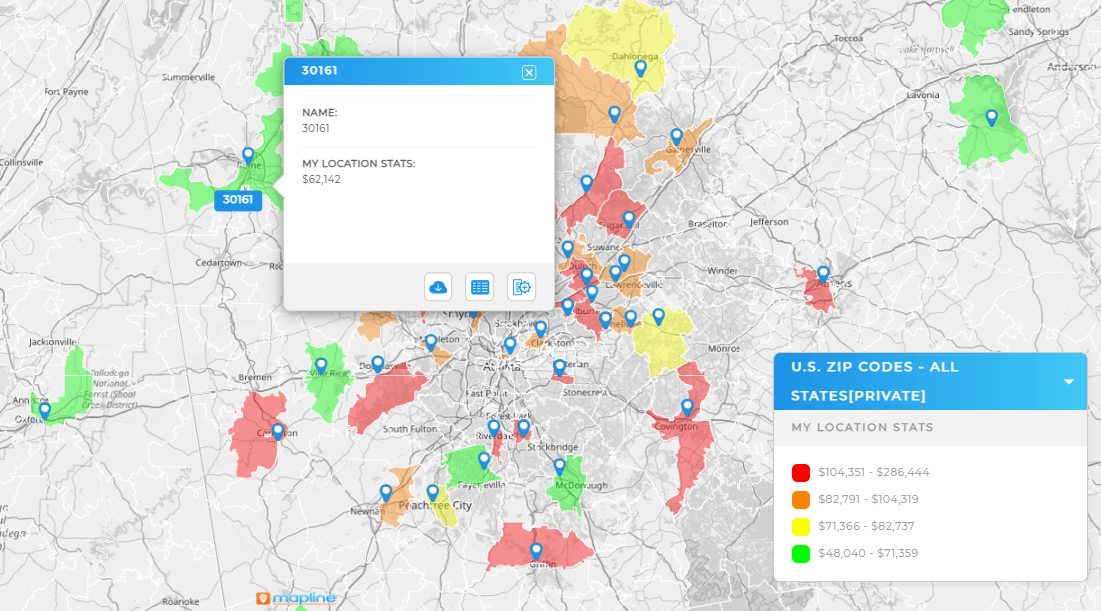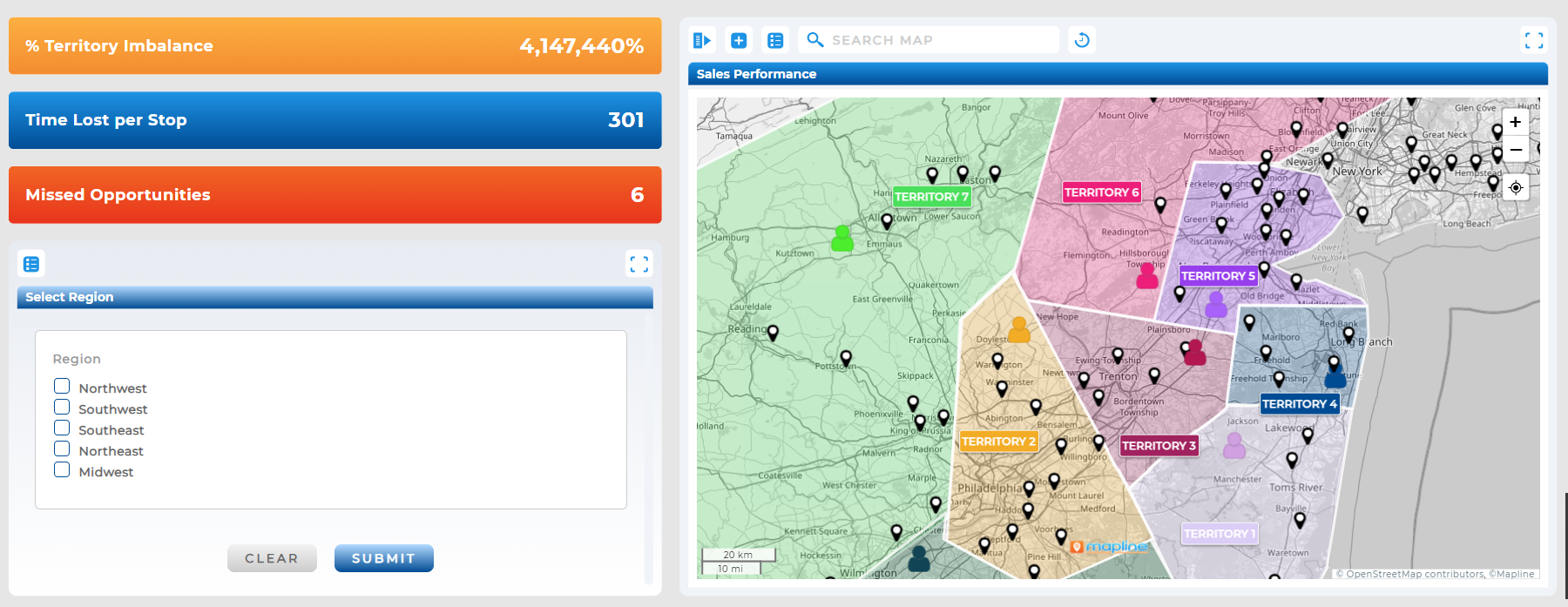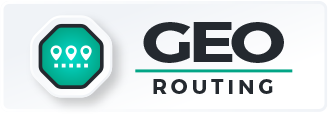- Blog
- Geo Mapping
- Zip Code Heat Maps: Exposing Revenue Gaps You Didn’t Know Existed
Revenue gaps often hide in plain sight. They don’t show up in spreadsheets or standard reports; they appear only when data is visualized geographically. That’s where zip code heat maps come in. By highlighting patterns of demand, customer distribution, and sales performance by postal region, businesses can uncover opportunities and inefficiencies they didn’t know existed. With the right tools, creating heat maps by zip code isn’t just about visualization — it’s about equipping leaders to make smarter, faster, and more profitable decisions.
What Is a Zip Code Heat Map?
A heat map by zip code is a visual representation of data intensity across postal regions. By shading areas based on values like sales volume, customer count, or service calls, companies can quickly see where they’re thriving and where they’re falling short. Modern tools, such as a zip code heat map generator, make it easy to create a heat map with zip codes directly from spreadsheets or CRM data. Instead of combing through endless rows, leaders see clear geographic patterns they can act on.


Pro Tip: Geo Mapping makes it easy to create a map with zip codes. From spotting underserved areas to optimizing territories, it delivers insights that help you close revenue gaps faster.
Why Heat Maps by Zip Code Matter for Business Growth
Location context is often the missing link in performance analysis. A heat map using zip codes reveals how activity changes across regions, helping businesses make more targeted investments. For example, marketing teams can identify underperforming zip codes for new campaigns, while sales leaders can rebalance territories to ensure fair workload distribution. With zip code heat map Excel options, even smaller businesses can start visualizing their data — but scalable platforms allow companies to go beyond charts and build actionable strategies.
Business Benefits of Zip Code Heat Maps
Zip code heat maps go far beyond simple visualization—they turn raw location data into a powerful decision-making tool. By displaying customer density, sales activity, or market saturation at the zip code level, businesses can quickly spot trends that would otherwise remain hidden in spreadsheets. This enables leaders to identify underserved regions, optimize resource allocation, and prioritize high-value markets. Teams can also track performance over time, compare territories, and make data-driven adjustments with confidence. Ultimately, heat maps empower organizations to reduce inefficiencies, uncover new opportunities, and accelerate revenue growth.
Spot Underserved Markets
By using territory mapping by zip code, leaders can see where coverage gaps exist. This ensures no potential customers are left behind, while high-demand areas get the resources they deserve.

Optimize Sales Territories
Sales territory mapping by zip code makes it easier to assign reps strategically. Balancing opportunity across territories ensures reps are motivated, customers are served, and performance is maximized.

Improve Forecasting Accuracy
With zip code territory mapping software, managers can forecast sales by region and compare performance across markets. This helps with planning, resource allocation, and long-term growth strategies.

Enhance Marketing and Campaigns
A heat map by zip code highlights where campaigns are resonating — and where they’re not. By understanding regional differences, businesses can refine messaging and focus spend where it will have the biggest impact.

It’s a map that shows data intensity across postal regions, helping businesses visualize trends and performance.
Upload your data into a zip code heat map generator< like Mapline, select your values, and generate the map instantly.
Yes, you can build a zip code heat map in Excel, but specialized platforms provide deeper insights and easier workflows.
They uncover hidden revenue gaps, optimize sales territories, and provide better visibility into performance.
Territory mapping defines boundaries and assignments, while heat maps show the intensity of activity within those boundaries.
Yes, a heat map using zip codes is one of the fastest ways to compare sales performance geographically.
No. Mapline is designed for business leaders who want simple, intuitive tools without technical complexity.









